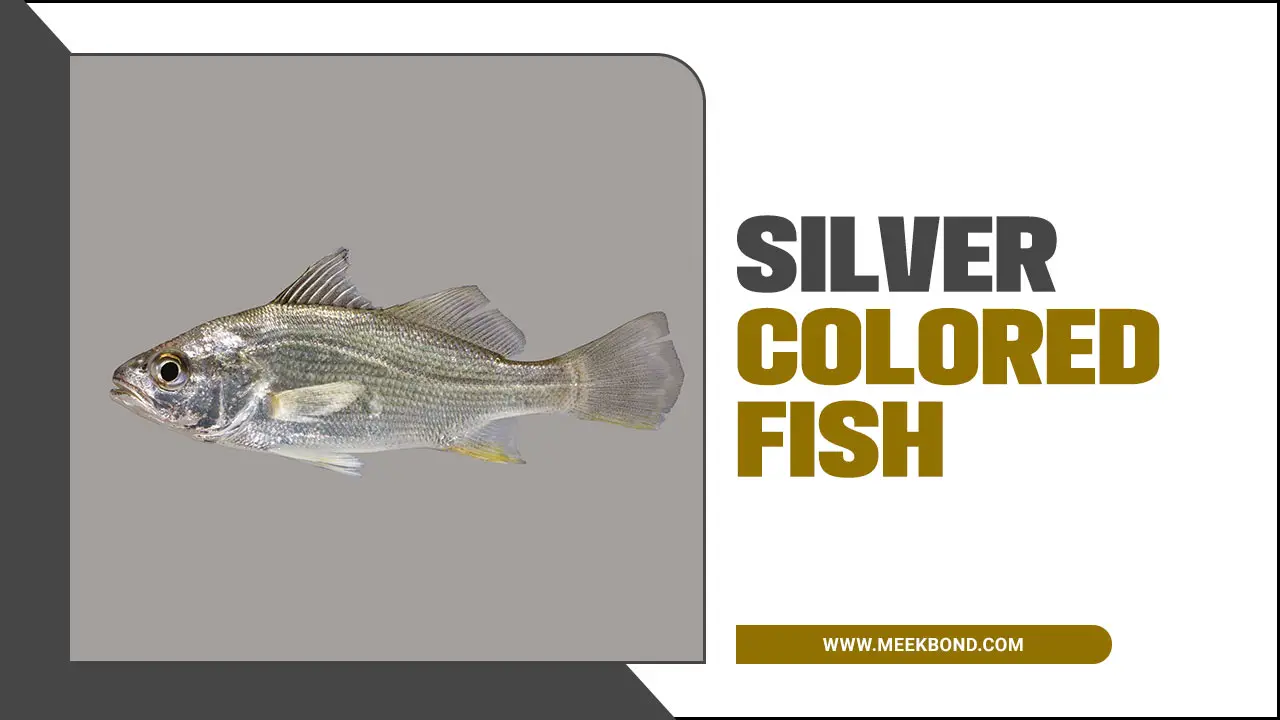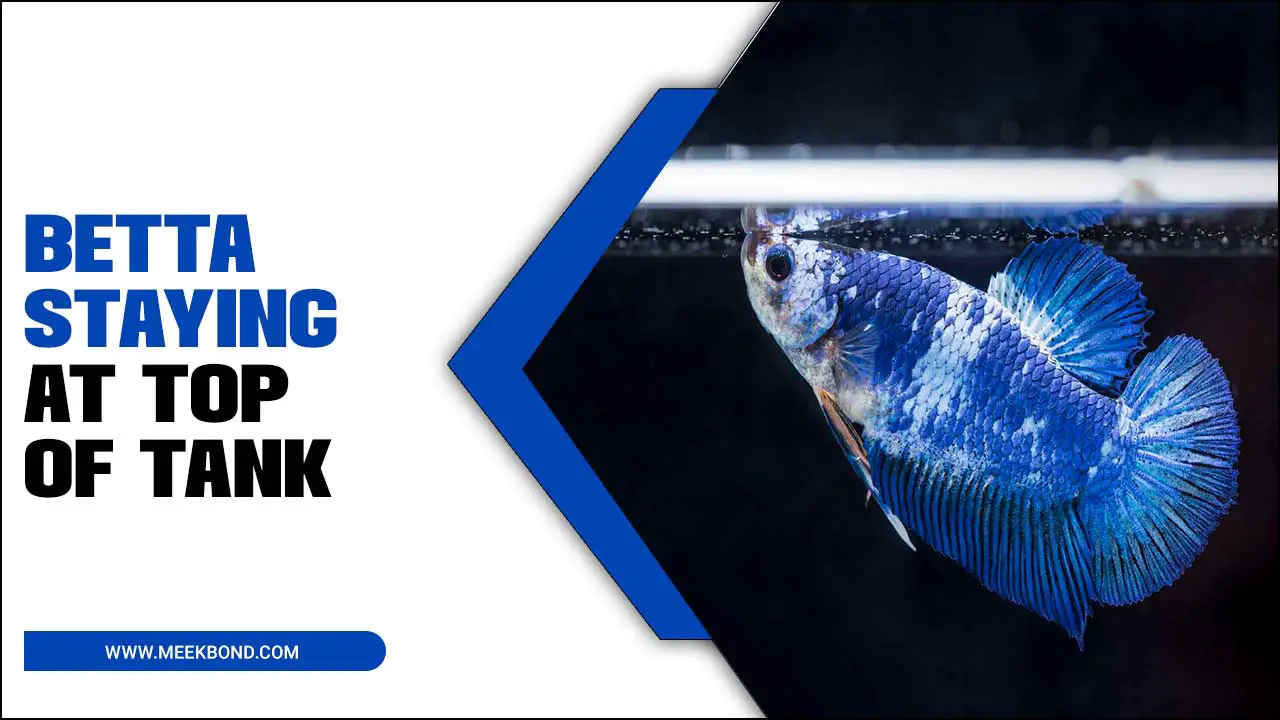Aquariums are fascinating and beautiful displays of aquatic life that can bring joy and relaxation to people of all ages. From vibrant fish and coral to graceful sea creatures like jellyfish and sea turtles, aquariums offer a glimpse into the underwater world that many people may not have had the opportunity to experience otherwise.
In addition to their aesthetic appeal, aquariums also serve an important educational purpose by teaching visitors about the importance of marine conservation and sustainability.
Have you ever dreamed of the saltwater aquarium at home but didn’t know where to start? The world beneath the waves is filled with wonder and mysterious creatures, and now you can bring a little bit of that magic into your home. We will guide you through setting up a saltwater aquarium.
We’ll cover the different types of saltwater aquariums, essential steps for setting up your aquarium, and advanced techniques for maintenance. We’ll share common issues that arise in most setups and how to avoid them so that you can enjoy your new underwater world stress-free.
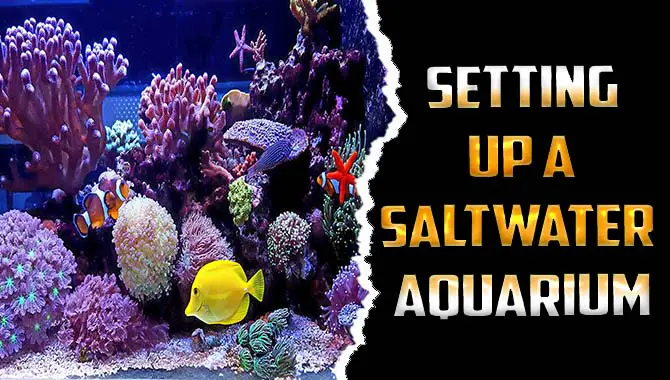
Types Of Saltwater Aquariums
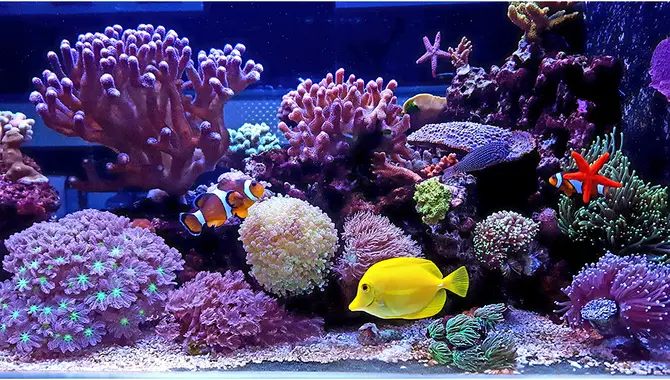
A saltwater aquarium can be an exciting hobby for many people. There are different types of saltwater aquarium setups that you can consider depending on your preference and experience level. Fish-only setups contain only fish and no live corals or other invertebrates, while FOWLR setups provide natural biological filtration by incorporating live rock into the setup.
Reef tanks add another layer of complexity by including live corals, invertebrates, and fish into the mix. Nano tanks are excellent options for beginners or those with limited space, while biotope tanks attempt to recreate specific natural environments such as coral reefs or rocky tide pools.
Fish Only
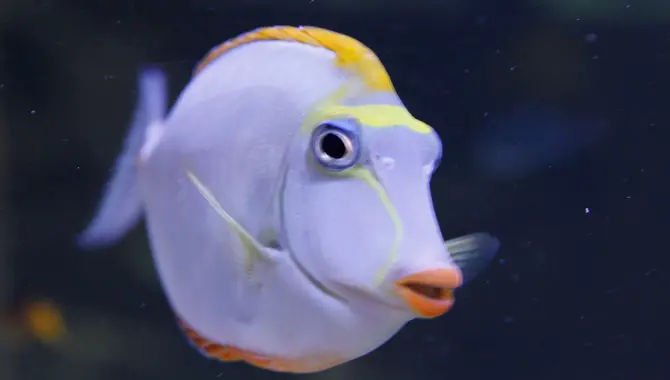
Consider starting with a fish-only setup instead of a reef tank. A fish-only saltwater aquarium contains only fish and no live coral or other invertebrates. These aquariums are easier to maintain and require less equipment than reef tanks.
Some popular fish for these tanks include tang, clownfish, and gobies. Before adding any fish to your tank, carefully research the needs of each species.
Fish Only With Live Rock (Fowlr)
Consider starting with a fish-only-live-rock (FOWLR) tank. These tanks contain live rock, a natural filtration system, and a habitat for beneficial bacteria and microorganisms that help maintain water quality.
FOWLR tanks require less maintenance than saltwater aquarium types and offer a range of fish species. Choose fish and tank environments that are compatible for the best success. Use test kits to regularly monitor water parameters, such as nitrate, nitrite, ammonia, pH, salinity, and temperature.
Reef Tank
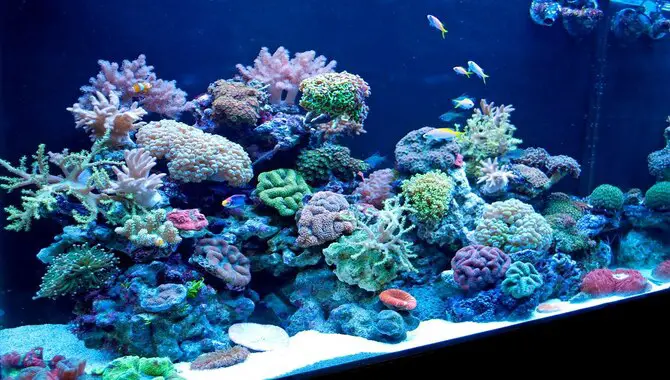
Reef tanks are a favorite type of saltwater aquarium among hobbyists due to their stunning display of colorful marine life. They feature live corals, invertebrates, and fish that inhabit coral reefs in the wild. To ensure a thriving reef tank setup, it is essential to maintain optimal water quality by using appropriate filtration systems like protein skimmers and powerheads to ensure better water circulation.
You must also consider lighting and nutrient balance factors while setting up your reef tank. With proper care and maintenance, your reef tank will be a source of relaxation and enjoyment for years. Secondary key terms used: saltwater aquarium, live corals, invertebrates, protein skimmers, powerheads, water quality, and filtration systems.
Essential Steps For Setting Up A Saltwater Aquarium At Home
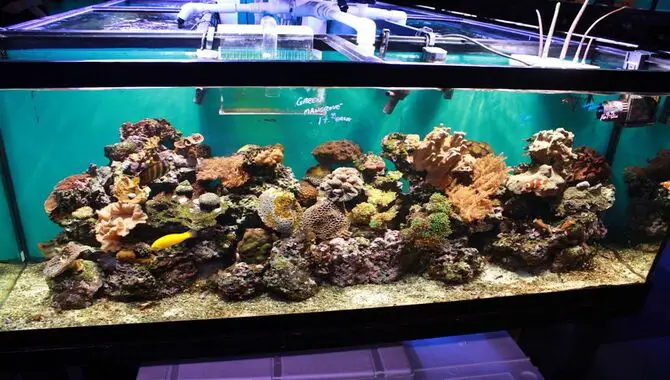
A saltwater aquarium is a beautiful and fascinating addition to any home or office. These aquariums are filled with salt water, which creates a unique and diverse environment for fish, plants, and other marine life.
One of the key benefits of a saltwater aquarium is the variety of colorful and exotic fish that can be kept in it. From clownfish to tangs to angelfish, the options are endless. Here are essential steps for setting up a Saltwater aquarium at home. Scroll down to get into details.
1. Adding Water And Sea Salt
To set up a healthy saltwater aquarium with proper salinity levels, use a high-quality marine salt mix and follow instructions carefully. Regularly check and adjust water parameters to ensure a stable environment for aquarium inhabitants, such as fish or corals.
Investing in a good protein skimmer helps eliminate organic compounds from the water keeping it clean. Remember that adding water and sea salt is not enough; you also need regular testing of water parameters and maintaining its cleanliness through a proper filtration system.
2. Installing Aquarium Equipment

Proper planning and research before installing aquarium equipment are crucial for a saltwater aquarium. The filter, heater, and protein skimmer must be installed per manufacturer instructions for optimal performance.
Regular maintenance and cleaning of the equipment is essential to maintain a healthy saltwater aquarium. Remember your setup location while placing the equipment for better water flow. Considering these factors, you can set up an efficient saltwater aquarium that will thrive with fish and live rock.
3. Choosing The Right Location For Your Aquarium
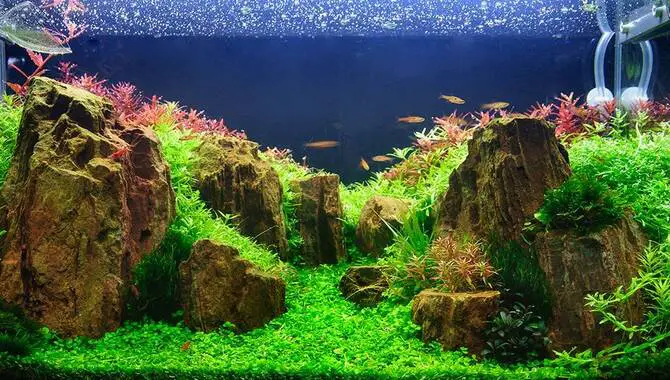
Finding the perfect location for your saltwater aquarium is essential to its success. Avoid direct sunlight or heating/cooling vents when choosing a spot for your tank. Ensure your tank sits on a level surface capable of supporting its weight and any added substrate or decorations.
Consider factors like ease of access for maintenance, proximity to electrical outlets, and visibility from different angles. By selecting the ideal location for your aquarium setup, you can provide a healthy environment for all inhabitants.
4. Aquarium Size And Equipment
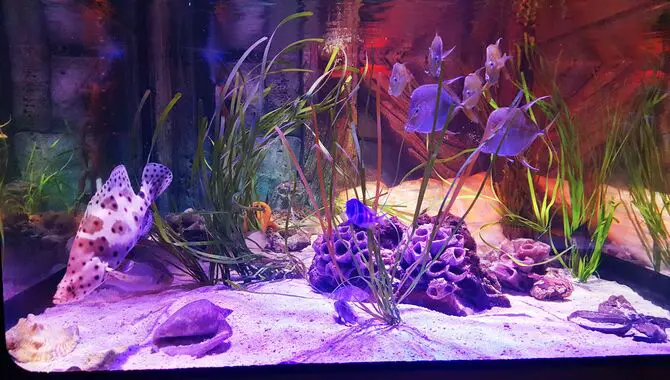
To ensure a successful and healthy saltwater aquarium setup, choosing the right tank size is crucial for the well-being of your marine inhabitants. Invest in high-quality aquarium equipment such as filters, heaters, protein skimmers, and proper filtration systems that can meet the specific needs of your aquatic species.
Regular water testing and maintenance are equally crucial for keeping your reef tank clean from harmful nitrite or ammonia levels that may harm your livestock. Remember to always research beginner tips on a saltwater aquarium before making any purchase to make this hobby an enjoyable experience.
5. Water Quality And Filtration
Proper water quality and adequate filtration are essential for the well-being of saltwater fish and marine creatures. Maintaining an appropriate level of water quality demands choosing a fitting filtration system that suits your aquarium’s size and type.
The three main types are mechanical, chemical, and biological filtration systems that help remove waste substances, such as toxins, from your aquarium’s water. Consistent monitoring of water quality parameters like ammonia levels helps prevent potential health risks to inhabitants like algae blooms or red slime outbreaks.
6. Understanding The Nitrogen Cycle
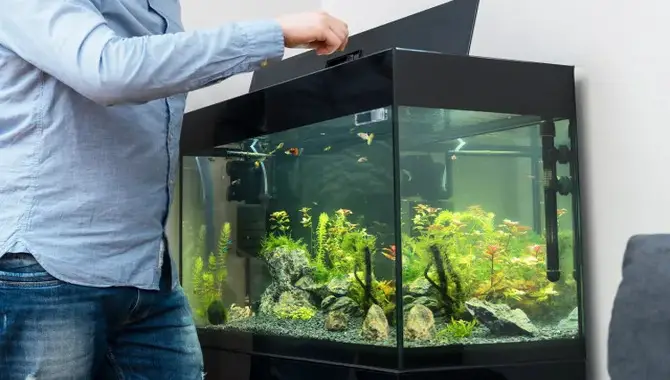
Maintaining the health and stability of your saltwater aquarium highly depends on understanding the nitrogen cycle. This critical process involves beneficial bacteria that convert harmful waste products into less harmful compounds.
The cycle flows through three key stages: ammonia, nitrite, and nitrate, which can be accelerated by adding live rock or artificial bacteria supplements. Regular water testing and maintenance are mandatory to ensure a healthy environment for your aquatic pets. Secondary key terms used: saltwater aquarium, live rock, beneficial bacteria, ammonia, nitrite, nitrate
7. Adding Rocks And Decorations
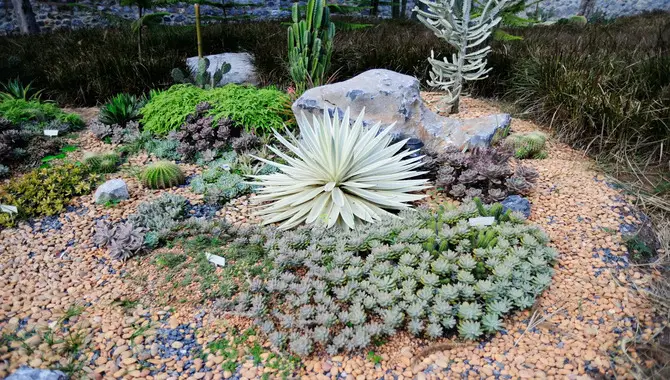
To enhance the aesthetic appeal of your saltwater aquarium while providing hiding spaces for fish, arrange rocks and decorations to facilitate proper water flow and swimming space.
Live rock packed with beneficial bacteria regulates the tank’s ecosystem. Artificial coral replicas or sunken ships create a natural environment for fish. Always clean rocks and decorations before adding them to the aquarium to keep it healthy.
8. Live Rock And Live Sand
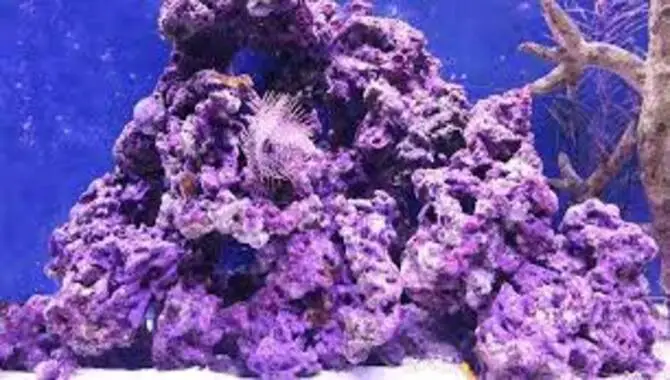
When creating a saltwater aquarium, incorporating live rock and live sand is crucial for developing a healthy ecosystem. They provide filtration, substrate, and vital microorganisms necessary for thriving marine life.
Reputable suppliers offer high-quality live rock and sand that must be cycled correctly before introducing any inhabitants. While artificial decorations are an option to add character to your tank, they don’t have the same benefits as the live rock covered in beneficial bacteria. Ensure appropriate placement of rocks and decorations to maintain proper water flow in your reef aquarium.
9. Adding Aquarium Substrate
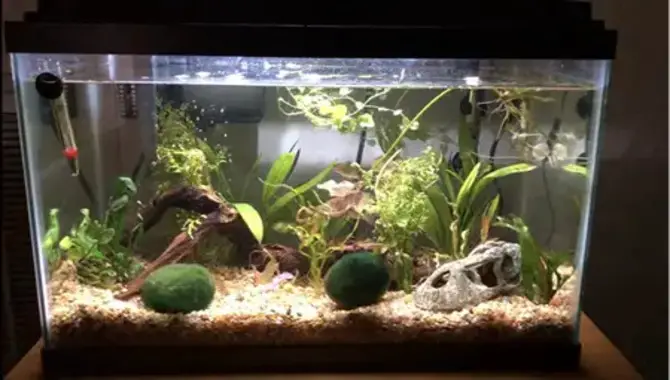
When you add substrate to your saltwater aquarium setup, always pick the right kind based on the inhabitants you plan to keep in your tank. You can use different options like sand, crushed coral, or live rock. If you prefer a more natural environment that benefits your marine creatures, go for live sand and rock.
Before adding substrate, rinse it well so no debris or dust stays behind. Mindfully consider how deep you want the substrate to be based on what kind of creatures you will have in the tank.
10. Adding Saltwater Fish And Invertebrates
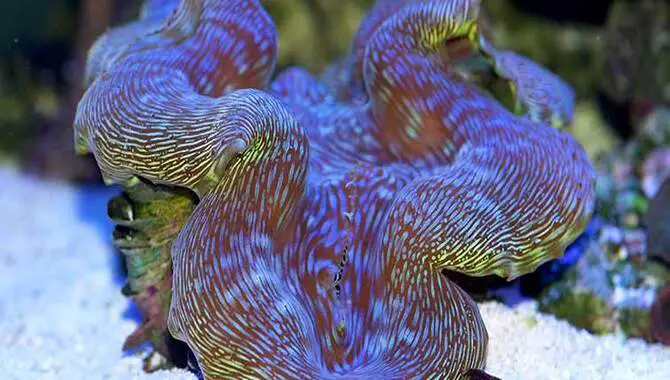
Introducing saltwater fish and invertebrates to your aquarium requires a cautious approach. Conduct thorough research on each species beforehand, considering factors such as water temperature, pH levels, and compatibility with other inhabitants.
Gradually add new additions to the tank after proper acclimation. Ensure regular maintenance and monitoring of water quality, as it’s vital for the health of your livestock. It’s important not to rush things when a saltwater aquarium – take it slow, enjoy the process, and build a thriving ecosystem for your marine creatures.
Feeding and Caring for Your Saltwater Aquarium
To maintain a healthy saltwater aquarium, it’s essential to balance nutrients and supplements with proper maintenance techniques. Researching the specific feeding needs of your fish and coral species is crucial before making any purchases, as overfeeding can be harmful. Regular water changes and testing are necessary for optimal water quality.
Prevent nutrient imbalances by investing in high-quality filtration equipment such as protein skimmers or reactors. Add beneficial bacteria through live rock or substrates like sand or crushed coral. Maintain ideal parameters such as salinity and pH by using test kits regularly.
Advanced Techniques and Maintenance
Maintaining a healthy saltwater aquarium requires careful planning and advanced techniques. Protein skimming and proper live rock placement are vital to clean the tank. Regular cleaning of filters helps maintain the water quality.
Testing for parameters like ammonia and nitrate levels is equally important. A sump with a refugium helps reduce algae growth, while beneficial bacteria aid in cycling. Keep aquarium equipment like pumps, heaters, and timers running smoothly. Always research before adding livestock to prevent leaks or diseases in your tank.
How Much Does it Cost to Set up a Saltwater Aquarium?
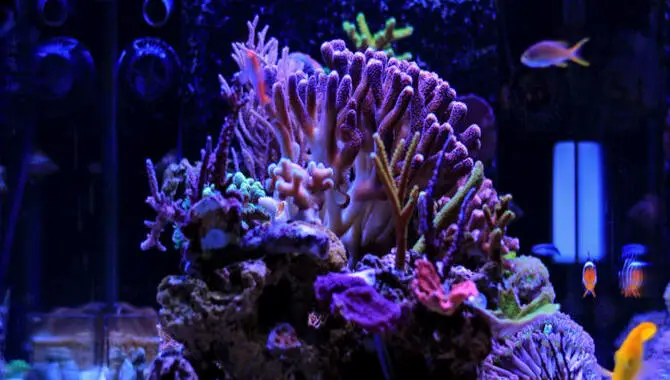
The total cost will depend on factors such as the size of the aquarium, the type of equipment needed, and the types of fish and coral you want to keep. Generally, the larger the aquarium, the more expensive it will be to set up.
On average, you can expect to spend anywhere from $500 to $2,000 or more for a basic setup, including the tank, filtration system, lighting, and live rock. However, you could easily spend several thousand dollars or more to create a more elaborate setup with exotic fish and coral species. It’s important to research and budget accordingly to ensure you can provide the best environment for your aquatic pets.
Cost Breakdown for a Beginner’s Saltwater Aquarium Setup
A saltwater aquarium requires planning and attention to detail for a successful outcome. With essential steps like adding water, sea salt, rocks, decorations, substrate, fish, and invertebrates, feeding and caring for them with proper nutrition, lighting, and filtration, investing in high-quality equipment & supplies become crucial for your reef tank or FOWLR setup too.
Cost Breakdown for a Beginner’s Saltwater Aquarium Setup: An average basic setup costs around $500-$1000, with additional lighting, filtration systems & live rock/sand expenses.
Avoid common issues like leaks, poor water quality parameters & cycling process by researching beforehand & testing water parameters regularly using test kits for ammonia/nitrite/nitrate/PH levels before adding livestock in the quarantine tank first.
Common Issues and How to Avoid Them in Your Saltwater Aquarium Setup
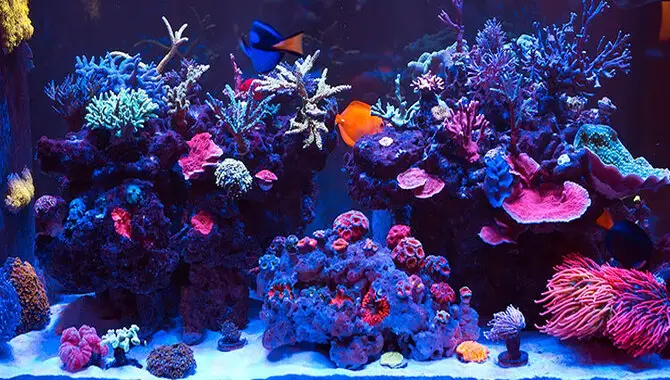
When setting up a reef tank or saltwater aquarium, it is crucial to research the specific needs of your aquatic inhabitants to avoid common issues. Overcrowding can result in poor water quality, which can cause stress and harm to aquatic life. Therefore, monitoring temperature, salinity, and pH levels with frequent testing regimes is important.
To maintain a healthy ecosystem, regular cleaning and maintenance of equipment such as filtration systems (protein skimmer), powerheads (water flow), heaters (timer), sump (refugium), return pumps (water movement), and reactors (beneficial bacteria) are essential. It’s also advisable to have a backup plan for power outages or equipment failure to ensure livestock safety.
Conclusion
Setting up a saltwater aquarium, we hope you have found the information provided helpful in your journey toward creating a beautiful and thriving underwater ecosystem. It requires careful planning and attention to detail.
From choosing the right type of aquarium to understanding the nitrogen cycle, there are many essential steps to follow. However, the result is a stunning display of marine life you can enjoy for years.
Remember the maintenance cost factor and consult experts if you face any problems. By properly caring for your saltwater aquarium, you will ensure the health and happiness of your aquatic pets. By following the steps and researching, you can create a stunning aquatic environment you and your fish can enjoy.
Frequently Asked Questions
1.What Equipment Do I Need To Set Up A Saltwater Aquarium At Home?
Ans: Setting up saltwater aquarium requires essential equipment like a tank, lighting, filtration, and a heater. Live rock, sand, protein skimmer, and hydrometer are also necessary. Additional equipment like powerheads and thermometers are useful. High-quality equipment is crucial for the well-being of your aquatic inhabitants.
2.How Long Does It Typically Take To Set Up A Saltwater Aquarium?
Ans: The time it takes to set up a saltwater aquarium varies, usually taking weeks to months. The process involves selecting and preparing the tank, adding live rock and sand, and cycling the tank for around 4-6 weeks to establish beneficial bacteria and stabilize water parameters.
3.What Are Some Common Mistakes To Avoid When Setting Up Saltwater Aquarium?
Ans: When setting up saltwater aquarium, avoid overcrowding by adding fish slowly. Don’t rush the cycling process to prevent unhealthy water conditions. Overfeeding can cause bacteria growth, and tap water should be treated before use due to potentially harmful chemicals or minerals.
4.How Often Should I Perform Maintenance On My Saltwater Aquarium?
Ans: Regular maintenance is crucial for a healthy saltwater aquarium, and performing it once a week is recommended. This includes water changes, glass cleaning, and equipment checks. Testing water parameters monthly ensures safe levels. Consistent upkeep prevents future problems and keeps the aquarium looking stunning.
5.What Are The Basic Equipment And Materials Needed To Set Up A Saltwater Aquarium?
Ans: Setting up saltwater aquarium requires basic equipment like a tank, heater, filtration system, and lighting. Live rock or substrate, marine salt mix, water testing kit, and fish food are also necessary. Additional equipment, such as protein skimmers, powerheads, and sump systems, may be optional. Seek advice from an experienced aquarist for the best results.

Aquarium passion is all about connecting with the aquatic life and providing education to the public on the importance of these creatures. We showcase a wide variety of marine life through our exhibits as well as working with schools to provide unique learning opportunities for students of all ages.

